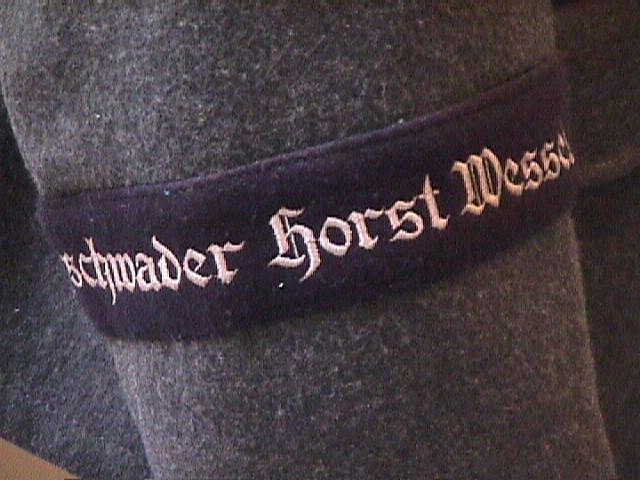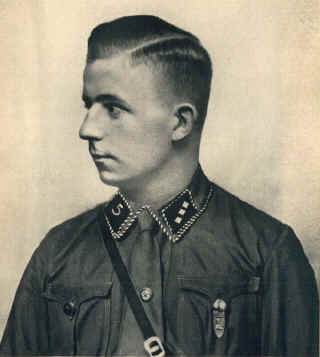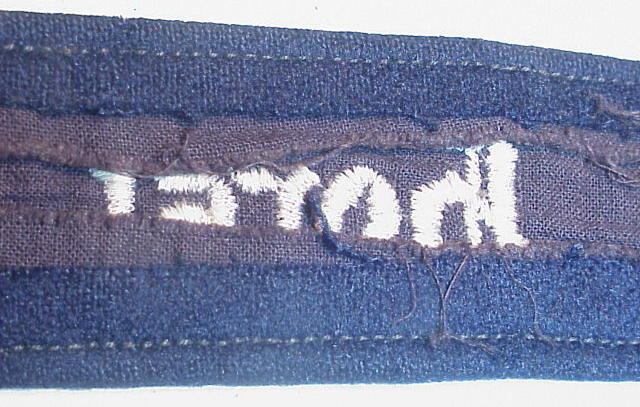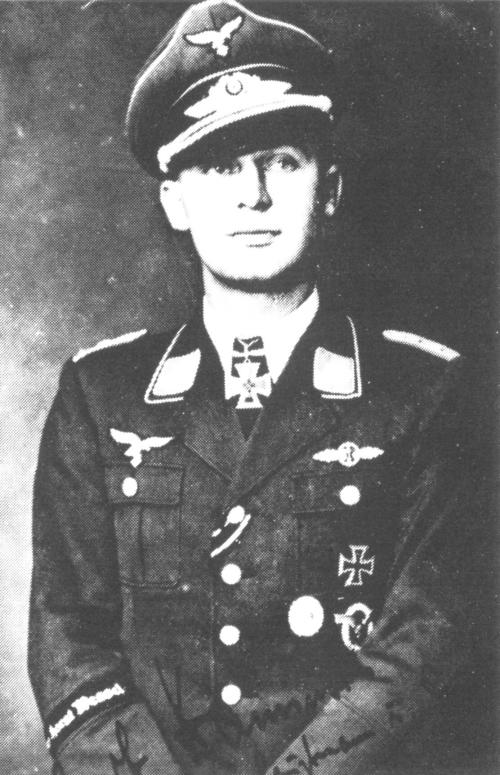
François Saez, Paul Williams & Gordon Williamson
GESCHWADER HORST WESSEL

This cuffband was introduced on 24 March 1936 by Luftwaffen-Verordnungsblatt Nr 15, Order Nr 457 and was to be worn by all members of Fliegergeschwader Dortmund, later to be renamed Zerstörer-geschwader 142, and ultimately Zerstörergeschwader 26. This type of unit was generally equipped with heavy, twin engine fighters such as the Messerschmitt Me110.

The band commemorated one of the Nazi Party “martyrs,” Horst Wessel, an SA-Sturmführer killed by Communists who had burst into his Berlin home on 23 February 1930. Wessel had written new lyrics to the tune which was to become the anthem of the Nazi Party, “Die Fahne Hoch,” subsequently known as the “Horst Wessel Lied.”
A collection was held by SA members throughout Germany and the funds raised were used to sponsor the manufacture of aircraft destined for Fliegergeschwader Dortmund.
The cuffband bore the inscription “Geschwader Horst Wessel” in the usual Gothic script lettering on a dark blue base. Like its counterparts, it was worn on the lower right sleeve.
Officer cufftitle GESCHWADER HORST WESSEL
An example of the standard NCO / enlisted man cuffband

The reverse ...

NCO in HORST WESSEL
Detail of an issue quality cuffband ....

Reverse detail ...

An example of the standard NCO / enlisted man cuffband
Detail

Hauptmann Herbert Kaminski
Kommandeur I./ ZG 26 "Horst Wessel"
awarded the Ritterkreuz on 6 August 1941.
Served in the post-war Bundeswehr, attaining
the rank of Oberstleutnant
An issue NCO / enlisted man cuffband.


Note:
An early example of the “Horst Wessel” cuffband
exists in hand-embroidered cording. The stylized script is in silver-grey
and the band has 3mm Russia-braid edging. It is believed to have been used
in the very early days of the unit’s existence.
Hauptmann Fritz Schulze-Dickow
8./ ZG 26 "Horst Wessel"
awarded the Ritterkreuz on 7 March 1942.
Also served in the Bundeswehr, attaining the
rank of Oberstleutnant.
![]()
© Copyright Wehrmacht-Awards.com LLC |